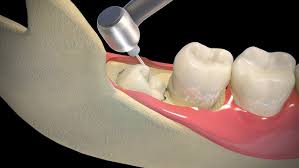Wisdom Teeth: When to Remove Them & What to Expect from the Process

Wisdom teeth, also known as third molars, often make their appearance in late adolescence or early adulthood. While some people experience no issues at all, many encounter discomfort, crowding, or infection when these teeth attempt to emerge. Understanding when to remove wisdom teeth and what to expect from the process can make a significant difference in maintaining oral health and avoiding complications.
Dental professionals generally recommend removal when wisdom teeth are impacted, partially erupted, or causing alignment problems with existing teeth. Impacted wisdom teeth are trapped beneath the gum line or grow at odd angles, potentially leading to pain, swelling, and even infection. Partially erupted teeth can create pockets where bacteria thrive, increasing the risk of gum disease and cavities. Even if no immediate symptoms occur, dentists may suggest proactive removal to prevent future complications, particularly in younger adults whose roots are less developed, making extraction easier.
The process of wisdom teeth removal has evolved tremendously over the years. Today, patients can access pain-free solutions for wisdom teeth removal that significantly reduce anxiety and discomfort. Local anesthesia is commonly used for standard extractions, while more complex cases may involve sedation dentistry or general anesthesia to ensure the patient remains comfortable throughout the procedure. This approach allows dental surgeons to perform extractions efficiently while minimizing pain and stress for patients.
Preparation for wisdom tooth removal typically involves a thorough consultation. Dentists or oral surgeons will review dental X-rays or 3D imaging to determine the positioning of the teeth and the complexity of the extraction. Understanding the layout of surrounding nerves and sinuses is crucial for a safe procedure. Patients may be advised to avoid eating or drinking for several hours before surgery if sedation or general anesthesia is planned. Additionally, arranging for transportation and a period of rest afterward is often recommended, particularly for those undergoing sedation.
The extraction itself is a highly controlled procedure. For straightforward cases, the dentist may simply lift the tooth out after loosening it from the gum tissue and bone. For impacted teeth, minor surgical techniques may be employed, including making an incision in the gum and removing a portion of the bone surrounding the tooth. Sutures may be placed to facilitate healing, and gauze is typically applied to control bleeding immediately after surgery.
Post-operative care is essential for smooth recovery. Common instructions include applying ice packs to reduce swelling, taking prescribed pain medications or over-the-counter remedies, and following a soft-food diet for several days. Maintaining oral hygiene while avoiding the surgical site can help prevent infection. Swelling and mild discomfort are normal in the first few days, but any severe pain, prolonged bleeding, or signs of infection should be reported promptly to the dentist.
Recovery times vary depending on the complexity of the extraction and the individual’s overall health. Most patients can return to normal activities within a few days, although complete healing of the extraction site may take several weeks. Following the dentist’s aftercare instructions carefully helps ensure a faster and more comfortable recovery.
Modern dental techniques have made wisdom tooth removal more accessible and less intimidating than ever before. Advancements in imaging, anesthesia, and minimally invasive surgical methods have significantly improved patient experiences, allowing individuals to maintain optimal oral health without the prolonged discomfort that historically accompanied these procedures. The improvements also mean that patients can plan their extractions with confidence, knowing that the process is safer, more predictable, and designed with comfort in mind.
For those curious about the technological and procedural innovations behind these advances, recent reports highlight the remarkable strides in modern dentistry that make wisdom tooth extraction easier and less stressful than ever. From digital imaging to advanced anesthetic techniques, these developments have transformed the way patients experience one of dentistry’s most common procedures.


